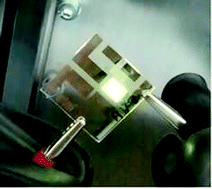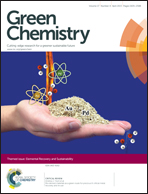From iridium and platinum to copper and carbon: new avenues for more sustainability in organic light-emitting diodes
Abstract
Recently, the first commercially successful applications for organic light-emitting devices (OLEDs) have entered the lighting and display markets, especially in smaller devices such as tablets and smartphones. In this article, we analyse materials and techniques used in OLED manufacturing in terms of sustainability and highlight upcoming trends which are supposed to further enhance this technologies sustainability.

- This article is part of the themed collections: 2015 most accessed Green Chemistry articles and Elemental Recovery and Sustainability

 Please wait while we load your content...
Please wait while we load your content...